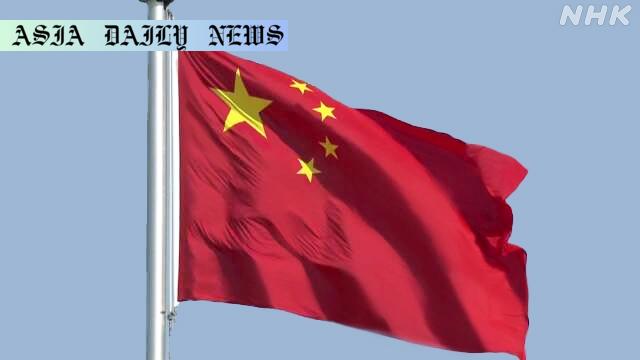Taiwan is depicted as in crisis in a controversial cartoon video released by China’s military amid ongoing tensions.
- China’s military released a controversial cartoon mocking Taiwan President Lai Ching-te.
- The video depicts Taiwan in flames, surrounded by weapons and portraying its leader as a sobbing worm.
- Beijing’s actions signal a stern warning to Taiwan independence advocates following Taiwan’s labeling of China as a foreign hostile force.

The Controversial Video and Its Symbolism
The Chinese military has released a provocative video depicting Taiwan amidst destructive tensions. In the video, Taiwan is portrayed as being in crisis, with its main island engulfed in flames and surrounded by an alarming array of weaponry: fighter jets and warships. At the heart of this contentious video lies the caricature of a sobbing worm with a striking resemblance to Taiwan’s President, Lai Ching-te. The cartoon worm is depicted with raised hands, held aloft by chopsticks, symbolizing an alleged weakness and manipulation.
Beijing’s video, which features this symbolic imagery, accuses Taiwan of harboring a “parasitic” stance that is poisoning the region. The surreal mockery fueled ongoing tensions, particularly as Taiwan’s President Lai referred to China as a ‘foreign hostile force’ in a recent news conference. This portrayal of the President as a defenseless figure encapsulates a larger power messaging intended to intimidate Taiwan and discredit its leadership on the global stage.
Geopolitical Implications Amid Rising Military Drills
The timing of this video coincides with increased military drills conducted by China along Taiwan’s territorial boundaries. Utilizing bold rhetoric and stark tactics, the video aligns with a broader display of power meant to serve as a warning against perceived Taiwan independence advocacy. The visual narrative of Taiwan burning and encircled by advanced weaponry further demonstrates China’s resolve to act against any separatist moves.
For international observers, this escalation signals a concerning trajectory in China-Taiwan relations. While Taipei has consistently advocated for its sovereign stance, Beijing’s recent provocations underscore the tightening grip of its ‘One-China’ ideology. These developments bear significant implications, potentially reverberating across global diplomatic circles.
Sociopolitical Ramifications and the Role of Media
This cartoon video is not just a military psychological operation but also a deliberate attempt to sway public perception—depicting Taiwan’s leadership as ineffective and its governance as a harmful influence. It also plays a dual role: fostering internal support within China for its firm Taiwan policy while simultaneously delegitimizing Taiwan’s claims of autonomy on the international stage. Moreover, by harnessing digital platforms, China’s video campaign highlights its sophisticated approach to influence operations, blending hard power and media narratives into one strategic initiative.
As Taiwan faces this barrage of symbolic aggression, its leadership seeks international support amidst the escalating rhetoric and displays of force. The situation also prompts further examination of regional dynamics in East Asia, with the United States and other allies closely watching the developments as they debate strategic measures to counterbalance China’s aggressive tendencies.



Commentary
Analyzing the Intent Behind the Video
The release of this cartoon video by the Chinese military serves as a combination of intimidation and propaganda. The caricature of Taiwan’s President as a sobbing worm, presented alongside destructive imagery, delivers a powerful visual that seeks to humiliate and belittle Taiwan’s leadership. This provocative move highlights China’s enduring strategy of using psychological tactics to weaken moral resolve.
Beyond its overt messaging, the video reflects the volatile discourse surrounding Taiwan’s independence. It represents an aggressive attempt to challenge Taiwan’s stance while also consolidating nationalistic sentiments within China. By framing Taiwan as a parasitic entity poisoning its own sovereignty, Beijing portrays itself as a defender of regional stability—an ironic stance, given the aggressive tone of its propaganda.
Impact on Taiwan-China Relations
China’s actions, embodied by this video, further stoke existing tensions between the two sides. For Taiwan, this serves as a reminder of its precarious position—caught between asserting its identity and countering the military might of its more powerful neighbor. Meanwhile, the island’s outreach for support from its allies becomes even more critical amid such brazen provocations. However, the incendiary nature of the video risks deepening anti-Beijing sentiments not only in Taiwan but also among international actors wary of China’s expanding influence.
The Global Context: Insights and Solutions
These developments arrive at a critical juncture for global geopolitics. The international community, particularly democratic allies like the US, must carefully analyze this escalation. Supporting Taiwan through military aid, diplomacy, and strategic alliances is vital to balance the scales of power in a region fraught with growing tensions. At the same time, such media-driven aggression also necessitates frameworks that counter disinformation and foster transparency.
Overall, this video is not merely a standalone event; it is a significant milestone in the ongoing effort to influence perceptions and assert dominance in the Taiwan Strait. The world must remain vigilant as these narratives evolve and evaluate the broader implications for peace and stability in the region.